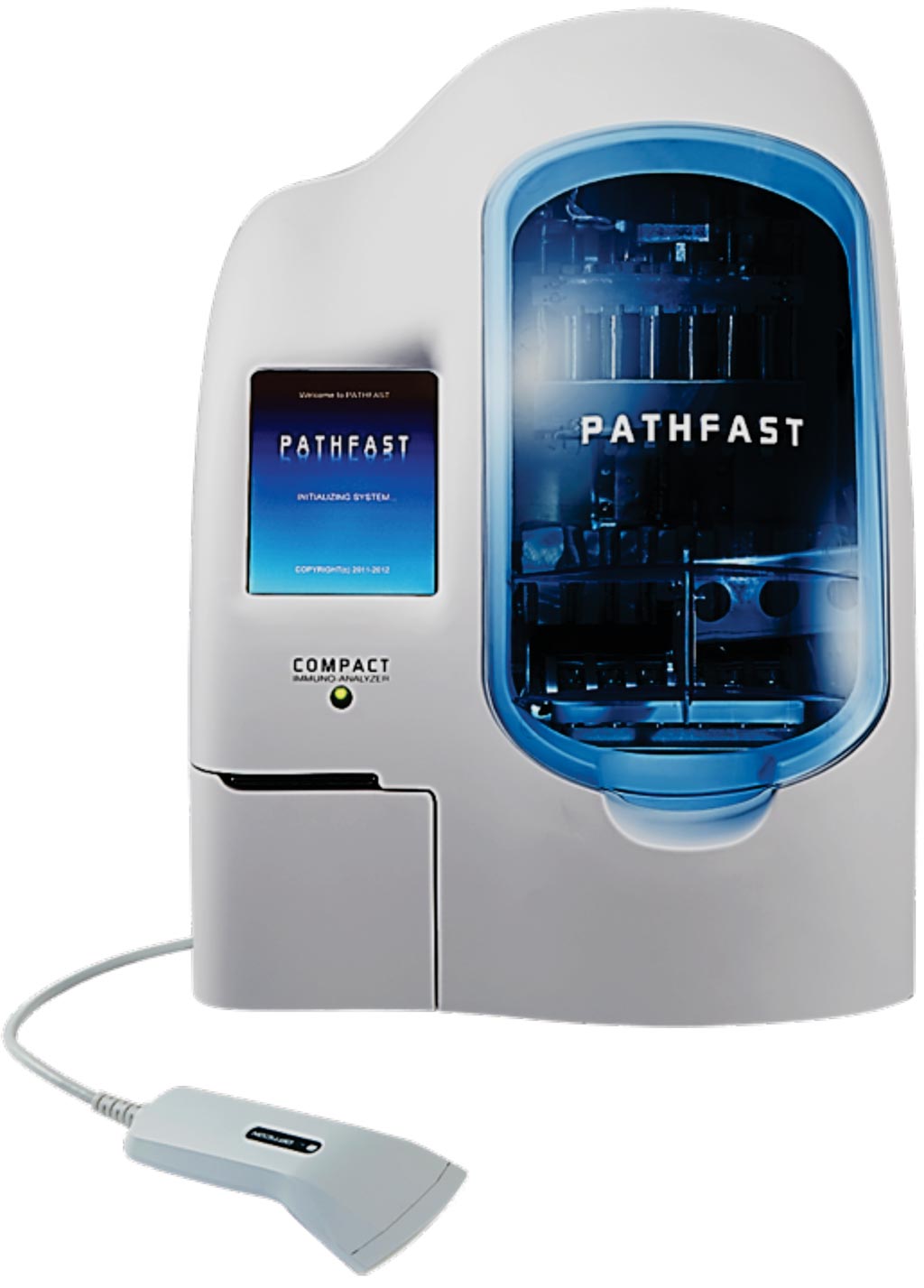Increased Probability of Sepsis Mortality Associated with SOFA Score
By LabMedica International staff writers
Posted on 17 Aug 2017
Sepsis-related organ failure assessment score, also known as sequential organ failure assessment score (SOFA score), is used to track a person's status during the stay in an intensive care unit (ICU) to determine the extent of a person's organ function or rate of failure.Posted on 17 Aug 2017
The score is based on six different scores, one each for the respiratory, cardiovascular, hepatic, coagulation, renal and neurological systems. Both the mean and highest SOFA scores are predictors of outcome. An increase in SOFA score during the first 24 to 48 hours in the ICU predicts a mortality rate of at least 50% up to 95%. Scores less than nine give predictive mortality at 33% while above 11 can be close to or above 95%.

Image: The compact PATHFAST Immunoanalyzer used for the presepsin point-of-care assay (Photo courtesy of LSI Medience Corporation).
Scientists at the Diagnostics Engineering & Research GmbH (Dossenheim, Germany) working with their medical colleagues compared sepsis biomarkers with a quick SOFA (qSOFA) for differentiation of sepsis, severe sepsis or septic shock and risk of mortality prediction. The group studied 66 patients admitted with signs of sepsis..Severe sepsis and septic shock were defined according to current guidelines. The qSOFA score was calculated from respiratory rate, Glasgow Coma Scale (GCS) score and systolic blood pressure using the recommended thresholds.
Presepsin (PSEP) and procalcitonin (PCT) were determined using the point of care (POC) assay PATHFAST Presepsin, and the BRAHMS luminescence immune assay. The team reported that discrimination between 30 sepsis (mortality=6.6%) and 36 patients with severe sepsis or septic shock (mortality=36.1%) revealed area under the curve (AUC) values of 0.621, 0.627, 0.731, 0.740 and 0.781 for lactate, PCT, qSOFA, PSEP and the combination qSOFA+PSEP, respectively. Using the threshold ≥2 of qSOFA and ≥500 ng/L of PSEP, the combination qSOFA+PSEP detected 14 non-survivors (93%) and 33/36 (92%) patients of the high-risk group whereas qSOFA alone detected only 10 non-survivors (67%) and 21 patients of the high-risk group (58%).
The authors concluded that their results demonstrated that the qSOFA score is not a standalone criterion for risk stratification in sepsis at admission. Simultaneous assessment by combining qSOFA and PSEP improved the validity significantly. The POC assay PATHFAST Presepsin showed superior performance compared to lactate and PCT. The study was presented at the 69th Annual meeting of American Association for Clinical Chemistry held August 1–3, 2017, in San Diego, CA, USA.
Related Links:
Diagnostics Engineering & Research














